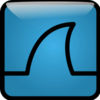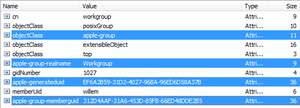Torrents and Usenet Downloading with an iPhone
 Thursday, May 19, 2011 at 21:03
Thursday, May 19, 2011 at 21:03 No idea if this is a new feature introduced with a newer version of Dropbox, but it is possible to download nzb and torrent files through the Mobile Safari app.
What you need is the following (for a complete downloading system):
- A Dropbox account (the 2GB version is free!!!!)
- A torrent application with the possibility of using a so-called watch-folder (e.g. Vuze)
- An usenet application with a watch-folder capability (e.g. SabNZBd+)
- An iPhone with the Dropbox app.
First you need to setup Dropbox. This is the easiest part. Just create two folders called 'NZB' and 'Torrent'. These folders will contain the downloaded torrent and nzb files.
After that you need to configure the Vuze and/or NZB download application to use a watch-folder.
I use these apps on my Mac Mini server. So it's operational 24/7.




